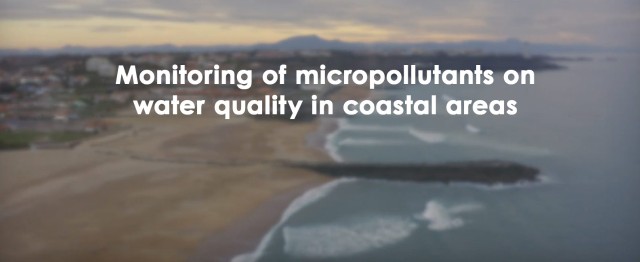Micropolit: Studying “Emerging” Micropollutants in aquatic ecosystemsMultidisciplinary approaches to improve river and seashore water quality

A scientific project invites teams of scientists to propose innovative research, new or disruptive topics, to reduce identified barriers, but also to promote interdisciplinarity and dissemination of information.
The Micropolit project brings together no less than 20 confirmed researchers from 7 different teams around emerging pollutants.
What is an “emerging” pollutant?
During the last three decades, the impact of chemical pollution has focused almost exclusively on the conventional “priority” pollutants, which have long been recognized as risks to human health, due to their toxicity and their persistence in the environment. Besides these recognized contaminants, numerous other chemicals are continuously released into the environment. The identification, analysis and characterization of the risks posed by these substances, classified as “emerging” contaminants, has focused attention and awakened concern among the scientific community during the last few years.
This group of compounds, still unregulated, may be candidates for future regulations, depending on research on their potential environmental and health effects and monitored data regarding their occurrence. Clearly identifying these contaminants, assessing their origin, predicting their evolution, and reducing their effects: these are the scientific challenges explored by Micropolit.
Multidisciplinary skills
The ground-breaking concept of Micropolit is based on the unique association of multidisciplinary skills available within the Aquatic Environment and Resources Research Federation (MIRA). The consortium had already started these joint approaches during the previous three years and the results obtained make it possible to attest the added value of these original approaches. The scientific novelty is based on a global insight into the knowledge of micropollutants in estuarine and coastal areas by combining complementary concepts:
- the analysis of multi-isotopic signatures, via mass spectrometer for instance, to track the sources and fate of micropollutants,
- the evaluation of the physiological and ecological impacts of micropollutants on organisms/populations,
- the new strategies to mitigate micropollutants by changes in practices at both the decisional scale and the consumer scale.
The multiscale and multidisciplinary approaches permit to relate physico-chemical reactivity with microbial and fish ecology and to provide quantitative insights leading to prevention and protection strategies.
Research focuses on three key areas: the Capbreton gulf, the Adour estuary, and the rocky Basque coast.
Micropolit Project Leader
